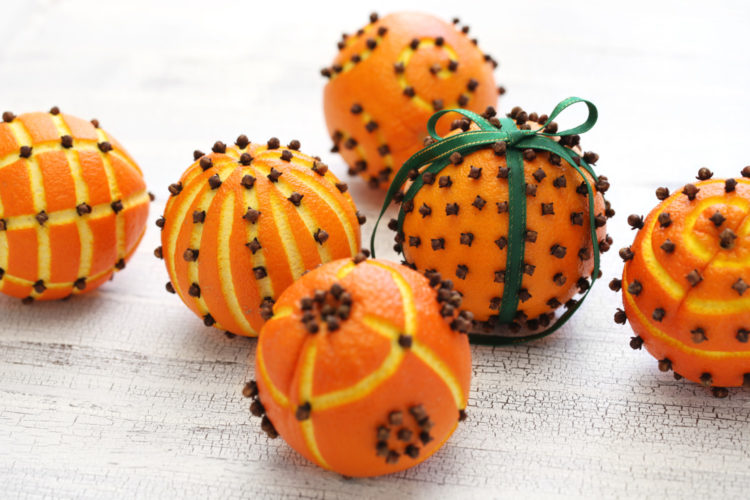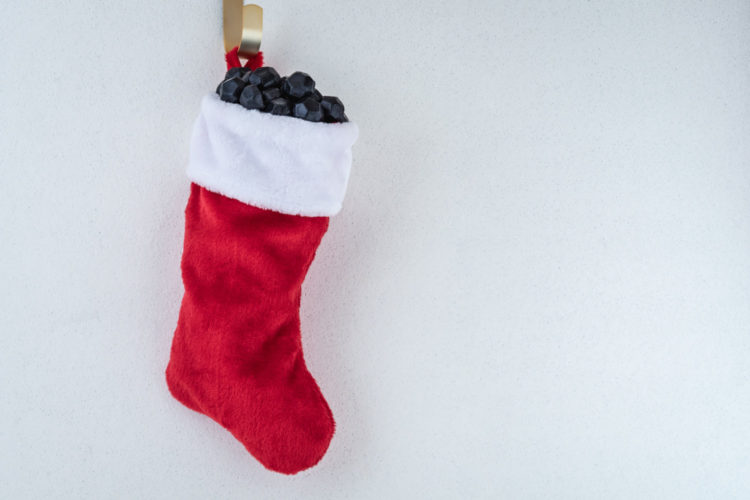If oranges in stockings are a holiday tradition in your family, you might not have thought about where the practice came from. But even if you and your kin don’t tuck citrus into the toes of Christmas stockings, you may be interested to learn how the quaint custom possibly came to be.
The Saint Nick Theory Behind Putting Oranges in Stockings
Historians and other experts have a handful of ideas as to how the practice of putting oranges in stockings at Christmas came to be. The predominant theory is that the custom is a nod to none other than the real Saint Nick.
Nicholas, who was canonized as a saint in 1466, was the Bishop of Myra during the fourth century. He was the son of wealthy parents, and when they died, he wanted to give away his inheritance. Legend has it that he gave bags of gold to three poor maidens. The girls’ indigent father was about to sell them into slavery.
The kind bishop dropped a sack with the gold through a window in the family’s home in the middle of the night, allowing the father to provide a dowry for his eldest daughter. After that, Nicholas came two more times, delivering bags of gold for the other young women and saving them from a life of slavery.
In some versions of the story, one sack of gold landed in a stocking hanging to dry near the fire. People began to use oranges and other bright citrus fruit as a symbolic substitute for gold as time went on.

Wealth, Luck And Good Old Advertising
Another theory about why people tuck oranges in stockings is that they were once considered extravagant. Centuries ago, you couldn’t simply pop into your local grocery store for a bag of citrus fruits. Only wealthy, often well-traveled people had access to such exotic foods.
In the early 1900s, the citrus brand Sunkist became the first farmer group to advertise a perishable product in a national campaign. People became more interested in oranges, and the fruit became more accessible. In 1908, the California Fruit Growers Exchange behind the Sunkist label advertised at Christmastime with a cartoon Santa Claus offered an orange as the “most healthful gift.”
During the Great Depression and throughout both World Wars, oranges were a welcome treat when money was so tight. It is also helpful that a plump orange will fit nicely into the toe of a stocking, making it a thoughtful, affordable filler.
It was common to make pomanders during the Victorian era by studding oranges with cloves. They would give the fragrant balls as gifts or hang them as decorations on their Christmas trees. This practice might also have contributed to the idea of putting oranges in stockings, especially because it was also during this time that Christmas was changing from a purely religious holiday to a day in which gift-giving took precedence.

Oranges can also be a symbol of good luck. For example, a tradition from Southern China is to exchange mandarin oranges during the Chinese New Year. The custom is known as “song gam” in Cantonese, which also means “giving gold” and symbolizes wishing prosperity to the recipient. While not likely a factor in the origin of putting oranges in stockings, it adds to the appeal of the tradition.
Other Christmas Stocking Stuffer Origins
With all of this history and trivia, you might wonder why people even hang stockings at Christmas. As with tucking oranges in stockings, there are many ideas about how the tradition of stockings came to be. Many believe that the same story of Saint Nick and his gifts of gold started the custom. Others believe the custom of St. Nick’s Day, when children wake up to find gifts in their shoes, initiated it.
Candy canes are certainly a stocking stuffer that has stood the test of time. One legend states that a choirmaster at the Cologne Cathedral in Germany in the late 17th century had sugar sticks shaped into shepherds’ crooks to keep the young singers quiet during the Living Creche ceremony.
However, candy canes were originally just white.
“At the turn of the 20th century, the red stripes—and peppermint flavor—emerged as the most popular choice,” Carly Schildhaus, public affairs manager for the National Confectioners Association, told History.com.

Finally, there is one item that no one wants to find in their stocking: A lump of coal. But why?
This is yet another tradition that harkens back to Santa Claus as well as 16th Century European folklore. While Saint Nicholas left gifts in shoes and socks left out by nice children in Germany and the Netherlands, his beastly counterpart, Krampus, would punish the naughty youngsters. One way that he would do so was to leave coal in their stockings.
So now, whether your stocking is full of fruit and candy or holds an unpleasant black rock, you will know a little more about the stories and traditions behind them.
This story originally appeared on Simplemost. Checkout Simplemost for additional stories.


